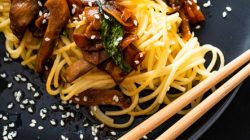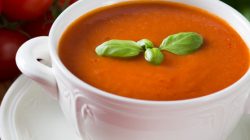Trending: Seaweed
Each year, we always look forward to the trends that seem to capture our attention so much that they drive our taste buds (or cars) to the nearest local spot to try them. One hot trend for 2016 that we never thought would grace consumer’s plates is sea vegetables. Sea vegetables, like sugar kelp, dulce and kombu, are pushing out kale as the new superfood. High in fiber, vitamins, minerals, iodine and more, sea vegetables might just be the ticket. Popular takeout delivery expert, Grubhub, predicts seaweed salad to be the hottest culinary trend in nine of the top culinary markets including Miami, New York, Boston, Philadelphia, Chicago, Seattle, San Francisco, LA and Atlanta.1 And trend driven consumers are seeking out seaweed in the snack aisle with Ocean’s Halo offering Sriracha or Maui Onion flavored seaweed chips. With so many types of seaweed, its application versatility and an ocean full of health benefits, it’ll be hard for consumers to avoid becoming entangled with this new darling from the sea.
The beauty of sea vegetables is their ability to impart a salty flavor without the negative side effects of salt, like water retention, giving manufacturers the opportunity to use sea vegetables as a salt replacement. And their activity at the cellular level and powerful volumes of vitamins, minerals, amino acids and antioxidants makes sea vegetables the perfect candidate for skin care, nail and hair products. Loaded with umami, sea vegetables certainly add flavor enhancement and a salty profile in dishes across many categories. And the sustainability appeal of seaweed is irresistible. The 71% of the earth that is covered in water has barely been exploited for food. The untapped potential of the ocean and its ability to satisfy consumer’s sustainability demands appears to be vast.
That begs the question: what type of sea vegetables will rise out of the ocean and how will they make their mark on menus, grocers’ shelves and consumers pantries this year?
Worth Sea-Ing
Dulse – A red seaweed containing approximately 16% protein and twice the nutritional value of kale, dulse (sounds like “pulse”) made headlines during the summer of 2015 once researchers at Oregon State found that it tasted just like bacon when fried.2 These same food scientists in Oregon have patented a strain of dulse that can be grown year round and doesn’t depend on tides or seasons, making its benefits available all the time. Dulse is being experimented in salad dressings, crisp rice crackers and trail mixes. Recently, New Seasons launched the first commercially available product containing dulse. Their Tamari with Dulse Seaweed Dressing & Marinade is only available in Portland and Vancouver as of now. On your next trip to Ireland, try The Ivy’s Skate with buttered dulse.
Sugar Kelp – Used fresh, it’s strands mimic pasta and when dried, has been used by Maine’s Marshall Wharf Brewing Company to brew an amazing salty and caramel note-filled beer. And this years upcoming Maine Seaweed Festival promises some unique seaweed creations including Low Tide Sugar Kelp, Ginger and Citrus Ice Cream from local based Lear’s Old Fashioned Creamery. And Whole Foods is collaborating with Thimble Island Oyster Company on a line of frozen kelp noodles that’ll have health conscious consumers twirling a few forks.
Irish Moss – A species of red algae native to Ireland and the rocky coastlines of North America. It is high in Vitamins A, E, F, K and is a naturally occurring source of iodine. Also called carrageenan, Irish moss is largely used as a thickening agent. Carrageenan is somewhat controversial due to studies linking it to digestive and inflammation issues in processed foods but eaten in its pure state is less controversial. Found to be good for dry skin and psoriasis making it the perfect ingredient for lotions, Irish Moss also has anti-bacterial and anti-viral properties and is a healthy thickener for soups and stews.
Wakame – Known as a chewier seafood, wakame is what traditionally is used in the previously references seaweed salad. Wakame is commercially available in grocers in either dried sheets or flakes but also in a mekabu or shredded variety that is perfect for salads when reconstituted. A common variety, wakame is particularly high in magnesium.
Kombu – Available on grocers’ shelves in its wild, hand harvested state for traditional dashi, soups, stews, deep fries or roasting. Kombu is an umami blast all on its own. We here at Nikken have our own kombu ingredient, Kombu Extract Powder 1917, along with a few other sea vegetable powdered ingredients. Chef David Levi, of famed Portland, Maine’s Vinland, took a risk in his strictly locavore based restaurant by embracing all things sea vegetable in his menus. Recently, a sweet Seaweed Panna Cotta with Blueberries starring kombu and featuring a little Irish Moss for thickening was featured. This summer, even the Disney Wilderness Lodge embraced the seaweed action with its Dashi-braised Short Rib with kombu turnip pickles.
Seeing a place for sea vegetables in your 2016 product development plan? Contact Nikken for samples of our Seaweed Powder and Kombu Extract Powder or for technical support with incorporating them into your concepts. The application possibilities are as bountiful as the ocean from which they come. And we’re not the least bit salty about that.
Sources:
- http://www.seafoodnews.com/Story/1005486/Grubhub-Says-Seaweed-Salad-is-Fastest-Trending-Item-in-all-its-Major-Metro-Markets
- http://oregonprogress.oregonstate.edu/summer-2015/next-big-thing-sea-vegetables)


